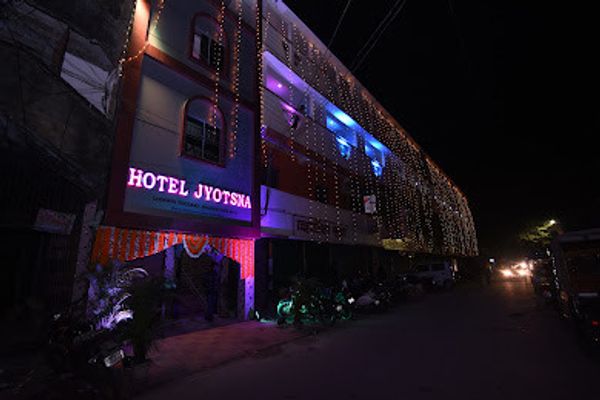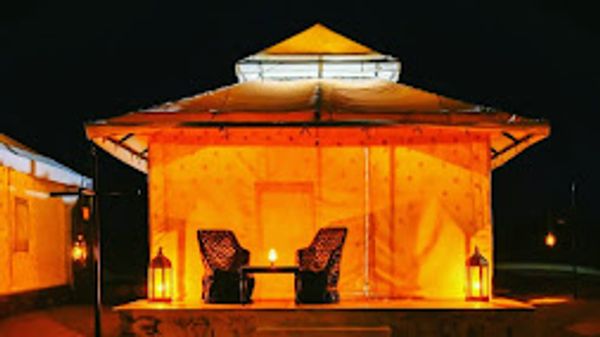Nature’s Best-Kept Secret: Why Kudremukh National Park Deserves Your Visit
 Palakshi Meharwal
15 May, 2025
10 mins read
13
Palakshi Meharwal
15 May, 2025
10 mins read
13

Nestled deep within the heart of the Western Ghats in Karnataka, Kudremukh National Park remains one of India's most underrated natural treasures. Though often overshadowed by more commercial destinations, this protected gem offers a tranquil escape into a world of verdant hills, shrouded valleys, and elusive wildlife. With its diverse ecosystems and rich biodiversity, Kudremukh invites both nature lovers and adventure seekers to immerse themselves in a landscape as pristine as it is profound.
An Introduction to Kudremukh National Park
Declared a national park in 1987, Kudremukh spans approximately 600 square kilometers across the Chikkamagaluru district. Its name, which translates to “horse face†in Kannada, is derived from the mountain peak that resembles the profile of a horse’s head. This region forms part of the UNESCO World Heritage Site known as the Western Ghats—a global biodiversity hotspot teeming with endemic species and lush tropical forests.
Unlike many heavily trafficked parks in India, Kudremukh offers a quietude that is increasingly rare in today’s tourist-centric world. It’s not just a park; it’s a sanctuary of solitude where nature still speaks in whispers.
Why Kudremukh Is a Hidden Gem
Biodiversity Like No Other
Kudremukh is home to a remarkable array of flora and fauna. The park hosts over 190 species of birds, including the Malabar trogon, great hornbill, and imperial pigeon—making it a paradise for birdwatchers. Mammals such as the lion-tailed macaque, sloth bear, leopard, and the elusive tiger inhabit the dense canopies and riverine forests.
Botanically, the region is abundant in evergreen and semi-evergreen trees. Rare medicinal plants flourish here, contributing to the park’s ecological significance and drawing the interest of environmental scientists and ethnobotanists alike.
Trekking Trails Through Paradise
Among the park’s many attractions, the Kudremukh Peak Trek stands out. This moderately challenging trail weaves through misty grasslands, gurgling streams, and thick shola forests. The reward at the summit—a panoramic view of rolling hills shrouded in clouds—is nothing short of magical.
Trekkers are advised to secure permissions from the forest department, as the area falls under restricted protection. This control helps conserve its fragile ecosystem while offering a regulated but deeply rewarding experience for responsible adventurers.
Crystal-Clear Rivers and Waterfalls
Three significant rivers—the Tunga, Bhadra, and Nethravathi—originate from the park, carving through dense forests and cascading over rocks. Their tributaries form countless waterfalls and natural pools that remain untouched by commercial exploitation.
Kadambi Falls and Hanuman Gundi Falls are among the park’s most serene water features. Visitors can enjoy their gentle spray and cool mist, surrounded by the kind of unspoiled greenery that seems drawn from a dream.
An Eco-Conscious Experience
Kudremukh National Park promotes low-impact tourism. Strict regulations prevent the establishment of commercial resorts or businesses within its core area. This approach helps maintain the park’s ecological balance while offering travelers an opportunity to experience nature in its purest form.
Several eco-lodges and homestays on the park’s periphery provide accommodation while adhering to sustainable practices. These stays often include local culinary experiences, guided treks, and cultural insights, enriching the travel experience without compromising the environment.
Cultural and Historical Significance
The region around Kudremukh is steeped in folklore and history. Ancient temples, like the Kalasa Temple and the Horanadu Annapoorneshwari Temple, offer spiritual detours that reflect Karnataka’s deeply rooted cultural heritage.
Local communities, such as the Tuluvas and Malayalis who have long inhabited these hills, add a cultural richness to the landscape. Interacting with them provides visitors with a more holistic understanding of the park and its surroundings.
How to Plan Your Visit
Best Time to Go
While Kudremukh can be visited year-round, the post-monsoon months of October to February offer the most pleasant climate. The landscape is lush, the skies are clear, and the streams are full, making it the ideal time for treks and nature walks.
How to Reach
The nearest major town is Kalasa, located about 10 kilometers from the park. The closest railway station is in Mangalore (about 100 km away), which also has the nearest airport. From there, private taxis or local buses can take you to the park entrance.
Entry Requirements
As a protected area, the park mandates entry permits for treks and overnight stays. These can be obtained from the Forest Department at the Kudremukh base camp or Kalasa. It’s advisable to travel with a local guide for easier navigation and added safety.
Travel Tips
- Dress Appropriately: Lightweight, breathable clothing and sturdy trekking shoes are essential.
- Carry Essentials: Bring sufficient water, snacks, insect repellent, and a first-aid kit.
- Respect Nature: Follow the "leave no trace" principle. Avoid littering or disturbing wildlife.
- No Network Zones: Mobile reception is limited; inform someone of your travel plans before entering.
The Conservation Angle
Kudremukh was once the site of a controversial mining operation. The Kudremukh Iron Ore Company Limited (KIOCL) conducted mining activities here until 2005, when the Supreme Court ordered its closure to protect the park’s delicate ecosystem. Since then, rewilding and restoration efforts have shown promising results.
This episode serves as a potent reminder of the fine balance between development and conservation. Kudremukh’s transformation from a mining zone to a thriving sanctuary is a testament to the power of nature to heal when given the chance.
Why It Deserves a Spot on Your Bucket List
Kudremukh is not just a destination—it’s an experience that redefines your relationship with nature. In a world that often confuses tourism with exploitation, Kudremukh stands as a model for sustainable, meaningful travel. Here, you don’t just witness the natural world—you participate in its quiet resilience.
So, if you’re yearning for more than selfies and sightseeing, if you seek connection over consumption, and if you want your footprints to matter, Kudremukh National Park awaits. It may be nature’s best-kept secret, but it’s one that’s meant to be shared—with reverence and responsibility.
Conclusion
In a time when digital fatigue is real and true wilderness is rare, Kudremukh National Park offers an antidote. It invites you to unplug, unwind, and rediscover the joys of a simpler, greener world. Whether you’re a seasoned trekker, a curious naturalist, or a weary city-dweller seeking peace, this forgotten Eden in Karnataka deserves not just a visit—but your wholehearted attention.
If you're planning your next nature-inspired getaway, let Kudremukh be the name that leads you there. Not because everyone’s talking about it—but precisely because they aren’t.
Written By:
Palakshi Meharwal



Hotels at your convenience
Now choose your stay according to your preference. From finding a place for your dream destination or a mere weekend getaway to business accommodations or brief stay, we have got you covered. Explore hotels as per your mood.





